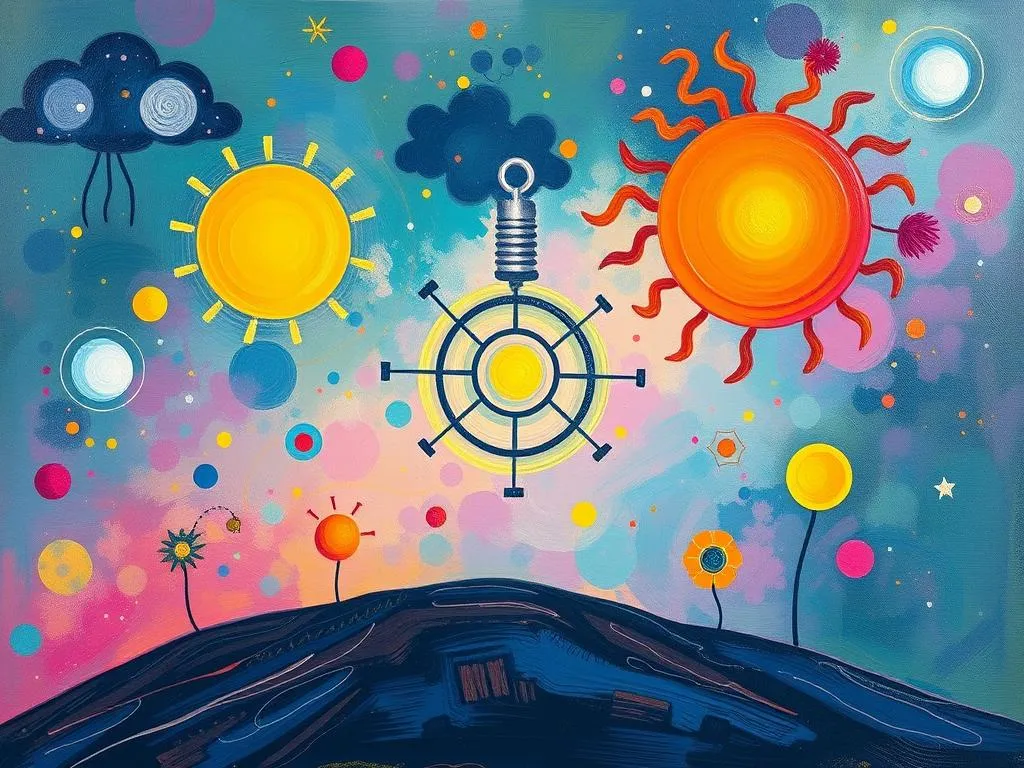
Have you ever woken from a dream feeling bewildered, as if your subconscious had just delivered a cryptic message? Dreams can be a fascinating blend of our deepest fears, desires, and experiences, often wrapped in symbolic language that can feel elusive. Much like scanning through a series of images on a screen, each dream presents a unique lens into our waking lives, urging us to decode its meaning.
In this article, we’ll embark on a journey through the intriguing concept of dream symbol scanning centers—those pivotal moments in our dreams where certain symbols emerge, demanding our attention. Together, we’ll explore the significance of these symbols, examine real-life scenarios that reflect their meanings, and uncover how this understanding can lead to profound personal growth. So, let’s dive in!
The Hidden Language: Decoding Dream Symbols
Dreams are often filled with symbols that communicate deeper truths about our waking lives. Each symbol can be interpreted through various lenses, including cultural, psychological, and personal perspectives.
Take, for instance, the image of a key in a dream. A key typically represents access or unlocking potential. In Western cultures, a key is often associated with new opportunities or secrets being revealed. Psychologically, it might symbolize control over your life or a solution to a problem you have been grappling with. If you dream of losing a key, it could reflect feelings of helplessness or a fear of missing out on an important opportunity.
Another prevalent symbol is water, which can signify emotions, intuition, and the subconscious mind. Clear, calm water may indicate tranquility and emotional clarity, while turbulent waters can signify emotional turmoil. In many cultures, such as Native American and Eastern philosophies, water is viewed as a source of healing and renewal. If you find yourself submerged in water in your dreams, it might suggest you are navigating your emotional depths and exploring your subconscious fears.
Consider the symbol of flight. In dreams, the act of flying often represents freedom and liberation. It can also reflect aspirations and the desire to escape from constraints. In contrast, if you find yourself plummeting from the sky, it may signify feelings of failure or a fear of losing control. Linguistically, the concept of flight can be examined through various cultural lenses; for instance, in many Indigenous cultures, the act of flying symbolizes a connection to the spirit world.
Understanding these symbols is crucial. They serve as signposts in the landscape of our minds, guiding us toward deeper self-awareness. By paying attention to recurring themes and symbols in your dreams, you start to unravel the narrative your subconscious is weaving.
A Dream Odyssey: Scenarios That Speak
To illustrate how dream symbols manifest in various scenarios, let’s examine several common dream experiences and their implications.
1. The Locked Door: Opportunities Awaiting
Imagine dreaming about a locked door. You may feel a strong urge to open it, yet it remains stubbornly shut. This dream could symbolize barriers in your waking life—perhaps an opportunity that feels just out of reach. Psychologically, it suggests you may be hesitant to confront challenges that could lead to personal growth. Consider what lies behind that door. Is it a new job, a relationship, or a creative project? This dream invites you to reflect on what opportunities you might be avoiding.
2. The Mirror: Reflection of Self
Picture yourself standing before a mirror in your dream. As you gaze into it, your reflection may appear distorted or unfamiliar. This scenario often points to feelings of insecurity or a lack of self-acceptance in waking life. Culturally, mirrors are symbols of truth and self-examination. If your reflection seems fragmented, it may be time to explore the various facets of your identity and embrace your true self. Ask yourself: What parts of myself am I unwilling to accept?
3. The Endless Staircase: The Journey of Life
Dreaming of climbing an endless staircase can evoke feelings of frustration and fatigue. This symbol often represents the struggles and challenges we face in our waking lives. It may suggest you are on a journey of personal development, but the path feels never-ending. In many cultures, staircases symbolize progression; however, this dream might indicate that you need to reassess your goals and pace yourself. Are you trying to rush your journey?
4. The Abandoned House: Exploring the Past
Imagine finding yourself in an abandoned house in your dream. Each room you explore may evoke feelings of nostalgia or unease. This scenario can symbolize unresolved issues from your past or aspects of yourself that you’ve neglected. Culturally, houses often symbolize the self, and an abandoned house can suggest feelings of disconnection from your own identity. This dream urges you to confront your past and seek closure. What memories need healing?
5. The Chase: Facing Your Fears
Lastly, consider a dream where you are being chased. This common scenario reflects feelings of anxiety or avoidance in waking life. The pursuer can symbolize an unresolved issue or fear that you are trying to escape. Culturally, such dreams are often linked to stress and the pressures of daily life. Rather than running away, this dream encourages you to confront what you fear. What would happen if you stopped running?
The Path to Transformation: Harnessing Your Dreams
Understanding your dreams is not just an intellectual exercise; it’s a pathway to personal growth and transformation. By engaging with the symbols and scenarios that arise in your dreams, you can gain valuable insights into your emotional landscape and navigate challenges more effectively.
Embrace Self-Reflection
Take time to reflect on your dreams. Keep a dream journal where you jot down your dreams upon waking. Over time, you may notice patterns and recurring symbols that reveal deeper truths about your life. This practice of self-reflection fosters greater self-awareness and can help you identify areas where you seek change or healing.
Practice Mindfulness
Incorporate mindfulness into your daily routine. By cultivating present-moment awareness, you can better recognize the subtle messages your subconscious is sending you through dreams. Mindfulness helps ground you in your emotions, allowing you to process and understand them more fully. Consider meditation or gentle yoga as tools to enhance your connection to your inner self.
Seek Community Support
Sharing your dreams with trusted friends or joining a dream interpretation group can provide fresh perspectives and insights. Engaging in discussions about dreams can illuminate aspects of your psyche that you may not have considered. This communal approach fosters a greater understanding of the collective human experience and the universal nature of dreams.
Set Intentions
Before going to bed, set an intention for your dreams. You might ask questions like, What do I need to learn? or How can I move forward in my life? This practice can invite clarity and guidance from your subconscious, making your dreams more purposeful and meaningful.
Take Action
Finally, dreams can serve as a catalyst for change. When you identify a symbolic theme or issue from your dreams, consider what actionable steps you can take in your waking life. Whether it’s addressing a fear, pursuing a neglected passion, or seeking closure on a past experience, taking action leads to personal empowerment.
In the grand tapestry of life, our dreams hold a wealth of wisdom, waiting to be discovered. By embracing the symbols, scenarios, and insights they offer, we can embark on a journey of self-discovery and transformation.
Remember, every dream is a thread in the intricate fabric of your existence.
Reflecting on your dreams allows you to weave a narrative that aligns with your true self, guiding you toward a life filled with purpose and meaning. So, the next time you find yourself standing at the threshold of a dream, pause, breathe, and listen—your subconscious has something profound to say.







